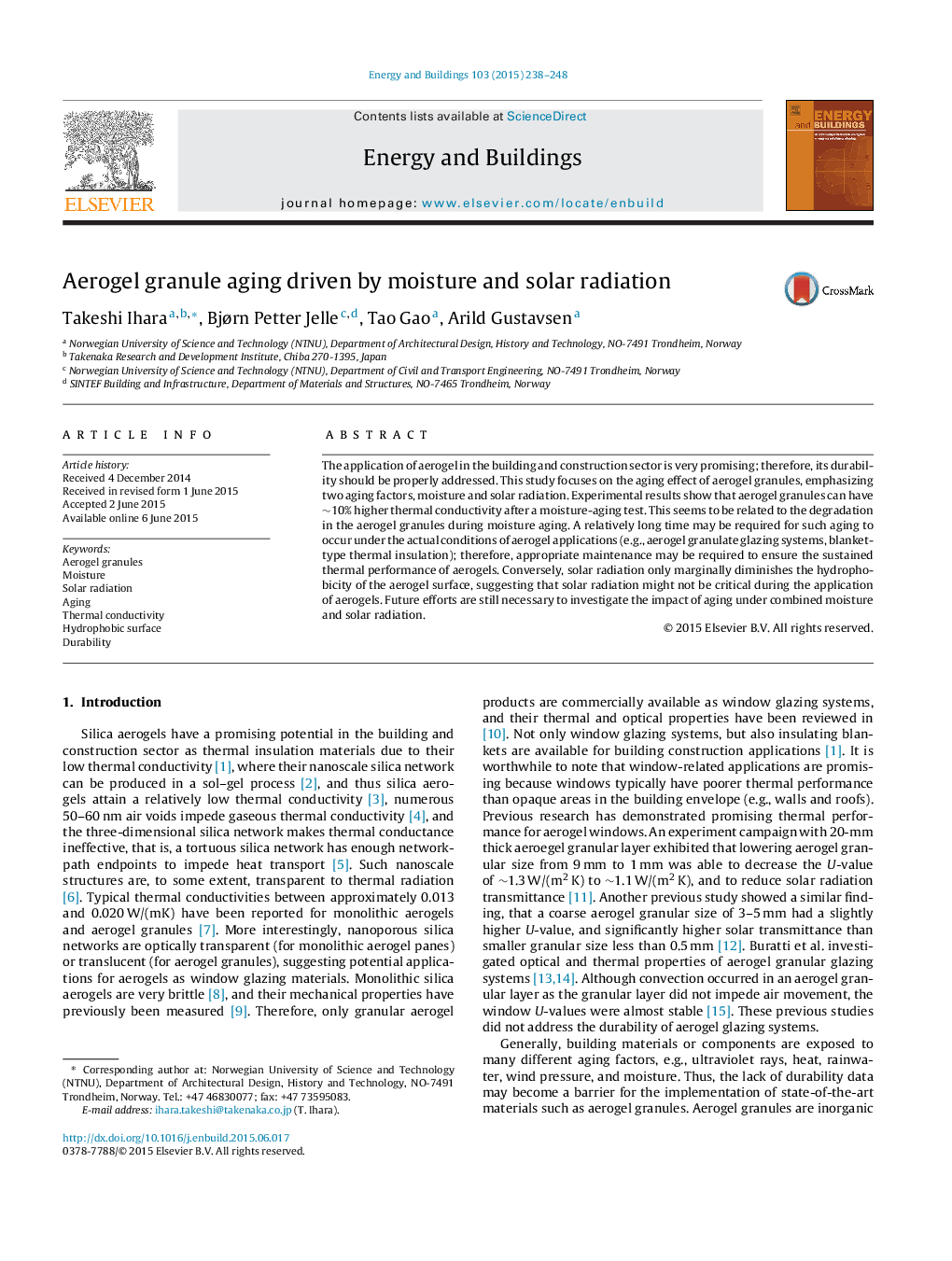| Article ID | Journal | Published Year | Pages | File Type |
|---|---|---|---|---|
| 6731251 | Energy and Buildings | 2015 | 11 Pages |
Abstract
The application of aerogel in the building and construction sector is very promising; therefore, its durability should be properly addressed. This study focuses on the aging effect of aerogel granules, emphasizing two aging factors, moisture and solar radiation. Experimental results show that aerogel granules can have â¼10% higher thermal conductivity after a moisture-aging test. This seems to be related to the degradation in the aerogel granules during moisture aging. A relatively long time may be required for such aging to occur under the actual conditions of aerogel applications (e.g., aerogel granulate glazing systems, blanket-type thermal insulation); therefore, appropriate maintenance may be required to ensure the sustained thermal performance of aerogels. Conversely, solar radiation only marginally diminishes the hydrophobicity of the aerogel surface, suggesting that solar radiation might not be critical during the application of aerogels. Future efforts are still necessary to investigate the impact of aging under combined moisture and solar radiation.
Related Topics
Physical Sciences and Engineering
Energy
Renewable Energy, Sustainability and the Environment
Authors
Takeshi Ihara, Bjørn Petter Jelle, Tao Gao, Arild Gustavsen,
